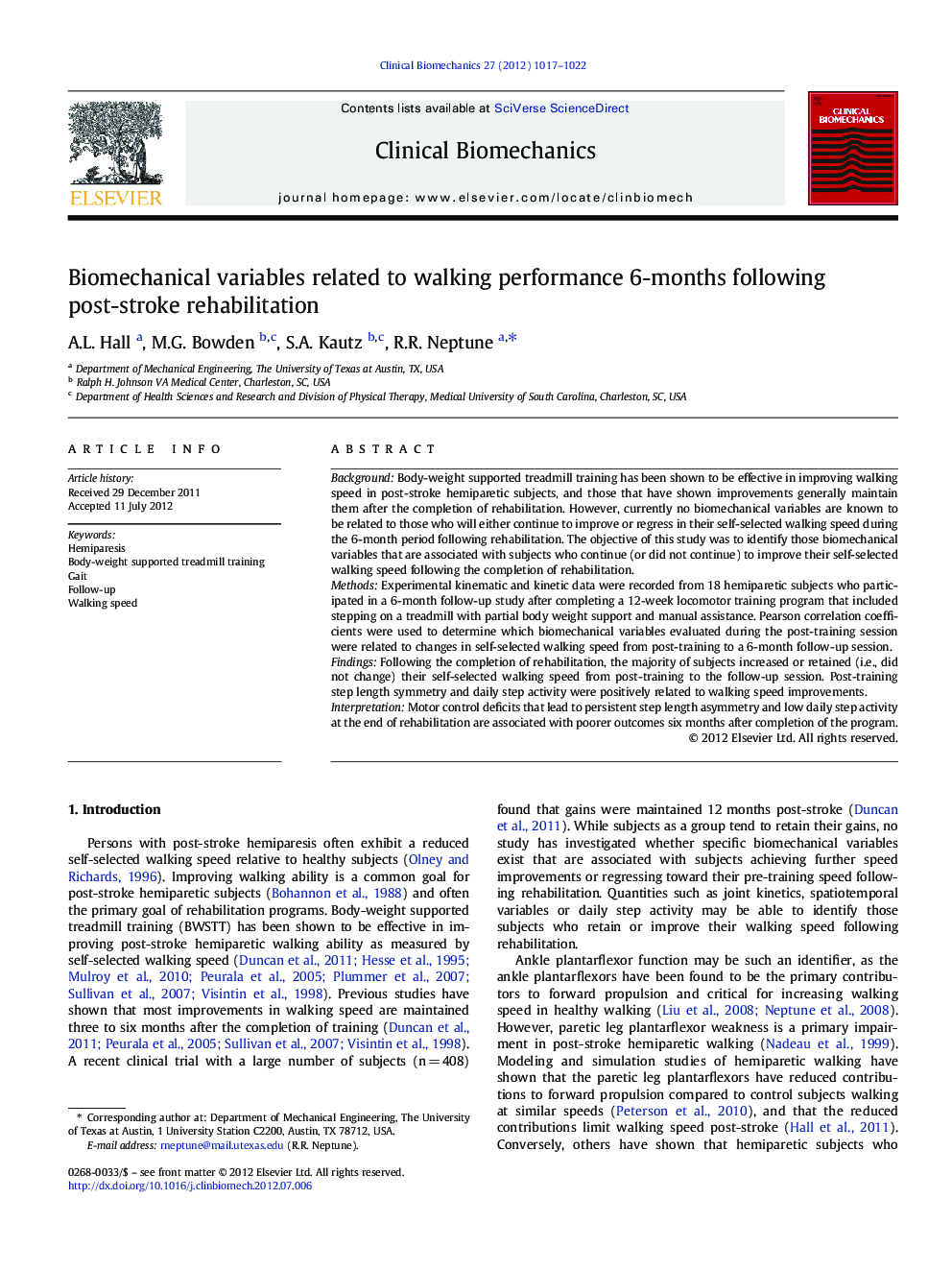| کد مقاله | کد نشریه | سال انتشار | مقاله انگلیسی | نسخه تمام متن |
|---|---|---|---|---|
| 6204914 | 1264929 | 2012 | 6 صفحه PDF | دانلود رایگان |

BackgroundBody-weight supported treadmill training has been shown to be effective in improving walking speed in post-stroke hemiparetic subjects, and those that have shown improvements generally maintain them after the completion of rehabilitation. However, currently no biomechanical variables are known to be related to those who will either continue to improve or regress in their self-selected walking speed during the 6-month period following rehabilitation. The objective of this study was to identify those biomechanical variables that are associated with subjects who continue (or did not continue) to improve their self-selected walking speed following the completion of rehabilitation.MethodsExperimental kinematic and kinetic data were recorded from 18 hemiparetic subjects who participated in a 6-month follow-up study after completing a 12-week locomotor training program that included stepping on a treadmill with partial body weight support and manual assistance. Pearson correlation coefficients were used to determine which biomechanical variables evaluated during the post-training session were related to changes in self-selected walking speed from post-training to a 6-month follow-up session.FindingsFollowing the completion of rehabilitation, the majority of subjects increased or retained (i.e., did not change) their self-selected walking speed from post-training to the follow-up session. Post-training step length symmetry and daily step activity were positively related to walking speed improvements.InterpretationMotor control deficits that lead to persistent step length asymmetry and low daily step activity at the end of rehabilitation are associated with poorer outcomes six months after completion of the program.
Journal: Clinical Biomechanics - Volume 27, Issue 10, December 2012, Pages 1017-1022